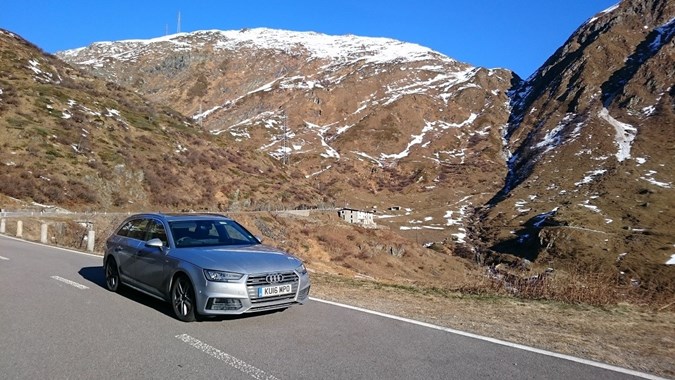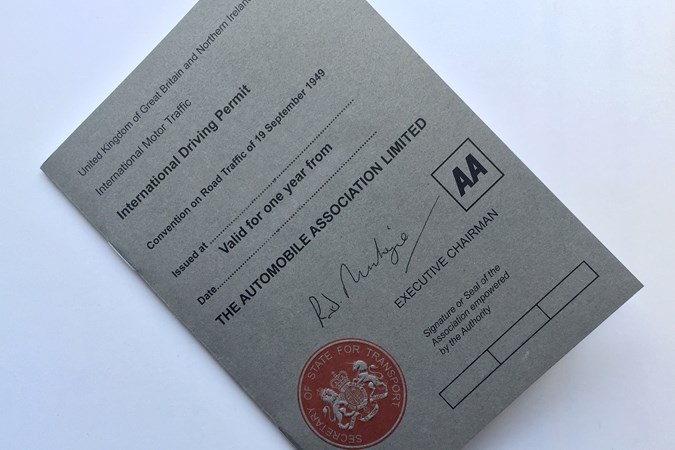A company car may be yours to take abroad on holiday, but you must remember to source and carry the necessary documents before taking the vehicle out of the country.
This is the advice from the British Vehicle Rental and Leasing Association (BVRLA), which is reminding those with rented or leased vehicles to seek permission from the company that owns the car before leaving the UK.
Source VE103 certificate before driving company car in Europe
Motorists must obtain a letter granting consent to take the vehicle abroad, along with a Vehicle on Hire (VE103) certificate, which can be used in place of the vehicle registration document (which must be carried as a legal requirement when driving in mainland Europe).

This VE103 certificate needs to be kept in the car for the duration of the journey, as drivers can be issued with an on-the-spot fine for failing to provide documentation – or in some cases even risk their vehicle being impounded.
Request documents from leasing company several weeks ahead of time
Drivers should request permission from the leasing company several weeks ahead of their departure to ensure they receive the relevant documentation in time. Most companies – though not all – will charge a fee for this to be provided, the BVRLA notes.
Company car drivers should also bear in mind that low-emission zones in 17 cities in Germany and three cities in France require motorists to display stickers showing the emission level of their vehicle.
The German stickers can be ordered online or bought in hotels, garages and environmental offices – upon presentation of the VE103 – for around 17.50 euros.
The French stickers, however, must be purchased online, and can take up to six weeks to arrive. The cost is around 3.70 euros plus postage.
Those not displaying appropriate stickers in marked low-emission zones could be stung with on-the-spot fines.
Do you need an International Driving Permit?
If you plan to drive abroad, it’s worth checking whether the specific country you are travelling to requires an International Driving Permit.
This is used in conjunction with your driving licence in approximately 140 countries and if you fail to produce one, you could be hit with a fine or have your car confiscated.
To apply for one, you will need to be a GB or Northern Ireland resident, have a driving licence and be 18 years of age or over. If you’ve just passed your test, you can use your test pass certificate and provisional licence.

This is also useful if you plan on hiring a car – rather than driving your company car there – although it’s worth noting that while the minimum age is 18 years, some countries insist you be over 21 to hire a car in the first place.
You can apply for an International Driving Permit by downloading a form and posting it directly with a passport-sized photo and a copy of your driving licence to the AA or RAC. Alternatively, you can physically pop into certain branches of the Post Office to have it done on the day.
This can be done up to three months prior to your date of travel and costs £5.50.
Once issued, the IDP is valid for a full year.
Which countries will I need an IDP for?
Country |
|
| Afghanistan | Laos |
| Albania | Latvia |
| Algeria | Lebanon |
| Angola | Leeward Islands |
| Argentina | Lesotho |
| Armenia | Liberia |
| Australia – New South Wales | Lithuania |
| Australia – Australian Capital Territory (Canberra) | Luxembourgh |
| Australia – Queensland; Western Australia | Macao |
| Austria | Malaysia |
| Azerbaijan | Malta |
| Bahrain | Martinique |
| Barbados | Mauritius |
| Belarus | Mexico |
| Belgium | Moldova |
| Benin | Morocco |
| Bermuda | Mozambique |
| Bhutan | Myanmar burma |
| Bolivia | Nepal |
| Brazil | Netherlands |
| Brunei | New Caledonia |
| Bulgaria | Nigeria |
| Burkina Faso | Oman |
| Cameroon | Pakistan |
| Cape Verde Isles | Philippines |
| Cayman Isles | Poland |
| Central African Rep | Portugal |
| Chad | Qatar |
| Chile | Reunion |
| China | Romania |
| Colombia | Russia |
| Comoros | Rwanda |
| Cote D’lvoire | Sabah – East |
| Croatia | Malaysia |
| Curacao | Sao Tome and Principe |
| Cyprus | Saudia Arabia |
| Czech Republic | Senegal |
| Denmark | Serbia and Montenegro |
| Djibouti | Singapore |
| Dominica | Slovakia |
| Egypt | Slovenia |
| El Salvador | Somalia |
| Equatorial Guinea | South Africa |
| Estonia | Spain |
| Ethiopia | Sri Lanka |
| Finland | Sudan |
| France | Surinam |
| French Guiana | Swaziland |
| Gabon | Sweden |
| Gambia | Syria |
| Germany | Taiwan |
| Ghana | Tajikistan |
| Greece | Tanzania |
| Guinea | Thailand |
| Guinea Bissau | Tunisia |
| Haiti | Turkey |
| Hong Kong | Turkmenistan |
| Iceland | Ukraine |
| India | United Arab Emirates |
| Indonesia | Uruguay |
| Iran | USA |
| Iraq | Uzbekistan |
| Ireland | Vietnam |
| Israel | Western Samoa |
| Italy | Windward Islands |
| Japan | Yemen Republic |
| Jordan | Zaire |
| Kampuchea | Zambia |
| Korea (South) | Zimbabwe |
| Kuwait |
Do I need an International Driving Permit after Brexit?
Currently, anyone with a UK licence can drive in all EU and EEA countries. This includes all countries in the European Union and also Iceland, Liechtenstien and Norway.
If there is an EU exit deal, UK licence holders will be able to continue to drive in these countries.
If the UK leaves the EU on 29 March 2019 without a deal, you may require an International Driving Permit to drive in all these countries. Ireland is the only country that will not require an IDP.
The government will seek to make arrangements for EU and EEA countries to recognise UK driving licences when people are visiting – for example, when on holiday or a business trip – but until then, an IDP may be required.
There are three types of IDP to choose from as they cover a selected range of countries.
- 1926: Liechtenstein
- 1949: Spain, Iceland, Malta, Cyprus
- 1968: all other EU countries, plus Norway and Switzerland
If you already have an IDP, check if the country you are visiting will still accept the type of permit you have after this date. If it is not accepted, you’ll need to replace it with a 1968 permit. You can find out which type of permit you have by referring to the front cover.
Do you need winter tyres?
Many European countries – such as Germany, Austria and Switzerland – require drivers to fit winter tyres to their cars throughout the colder months. Made up of a special rubber compound, winter tyres increase overall grip and reduce braking distances when the roads are wet and icy.

Furthermore in countries such as France, Germany, Italy and Austria, snow chains must be fitted to your car’s wheels where local signs dictate – usually in mountainous regions. Failing to comply could result in a heavy fine.











